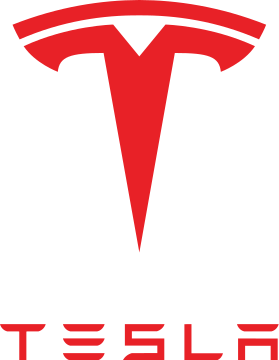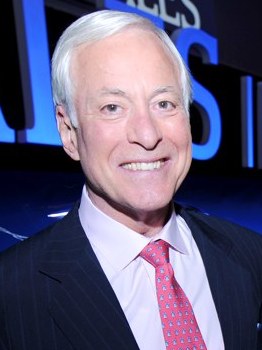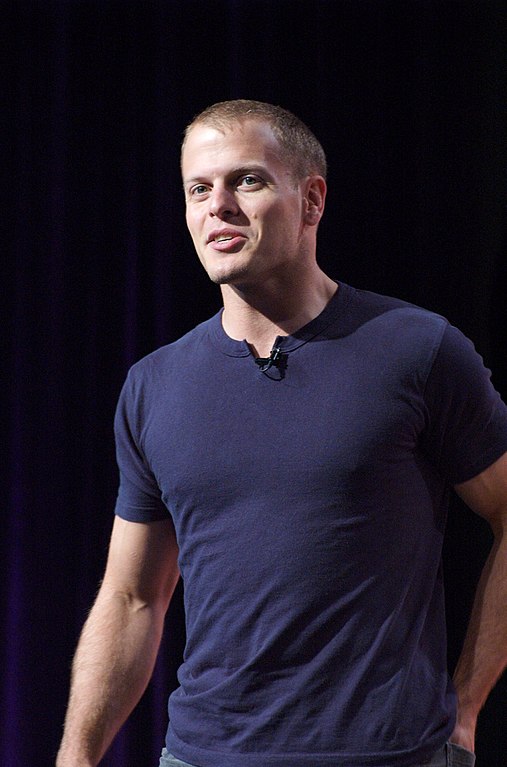Tesla’s Leadership Journey: Driving Innovation, Sustainability, and Customer Focus

Unveiling the Leadership Lessons of Tesla: Inspiring Success in a Rapidly Changing World
In today’s rapidly changing business landscape, effective leadership is a crucial ingredient for success, especially in industries poised for disruptive innovation. Tesla, the visionary electric vehicle company founded by Elon Musk, stands as a shining example of how strong leadership can revolutionize an entire industry.
Since its inception in 2003, Tesla has disrupted the automotive world, challenging the status quo and redefining what it means to build and drive a car. Led by the charismatic and forward-thinking Elon Musk, the company has transformed the perception of electric vehicles, making them not only environmentally friendly but also desirable and technologically advanced.
The story of Tesla’s rise to prominence is more than just a tale of technological breakthroughs and market domination; it is a testament to the power of visionary leadership. Elon Musk, often described as a modern-day Edison or Da Vinci, has captivated the world with his audacious goals, unrelenting determination, and relentless pursuit of innovation.
In this comprehensive article, we will delve into the leadership lessons and stories that have shaped Tesla’s journey from a startup to a global automotive force. We will explore the key leadership principles employed by Elon Musk and his team, which have fueled the company’s unprecedented growth and reshaped the automotive industry.
One of the fundamental aspects of Tesla’s success lies in the visionary leadership of Elon Musk. With an innate ability to see beyond the immediate horizon, Musk has consistently pushed the boundaries of what is possible, setting ambitious goals that others deemed unattainable. His unwavering belief in the potential of electric vehicles and his dedication to creating a sustainable future have inspired a shared vision among Tesla’s employees and stakeholders.
Tesla’s transformational leadership approach has played a pivotal role in its success. By fostering a culture of innovation and experimentation, the company has empowered its employees to think outside the box and challenge conventional wisdom. This approach has not only led to groundbreaking advancements in electric vehicle technology but has also instilled a sense of ownership and passion among Tesla’s workforce.
Furthermore, Tesla’s agile leadership has enabled the company to navigate the ever-evolving automotive landscape. In an industry known for its complexities and rapid changes, Tesla has demonstrated an exceptional ability to respond quickly to market dynamics, adapt its strategies, and stay ahead of the competition. The company’s commitment to continuous improvement and its willingness to embrace technological advancements have been key factors in its sustained growth.
Ethical leadership and sustainability have also been central to Tesla’s ethos. The company’s unwavering commitment to environmental responsibility and its dedication to reducing carbon emissions have set it apart from traditional automakers. By incorporating ethical considerations into its business decisions, Tesla has not only gained the trust and loyalty of its customers but has also set a benchmark for other companies in the industry.
Tesla’s customer-centric approach and its ability to create a unique brand experience have further strengthened its position as a leader in the automotive space. By understanding and exceeding customer expectations, Tesla has built a fiercely loyal community that advocates for the brand and actively participates in its growth. The company’s innovative marketing strategies and its emphasis on personalized communication have played a vital role in cultivating this deep connection with its customers.
Moreover, Tesla’s collaborative leadership and ecosystem approach have propelled its growth and influence. By forging strategic alliances with suppliers, partners, and even competitors, the company has leveraged the collective expertise and resources of various stakeholders. This open innovation model has not only accelerated Tesla’s pace of innovation but has also created a network effect that benefits the entire industry.
As we explore the leadership lessons and stories from Tesla’s remarkable journey, it becomes clear that the company’s success is not merely a result of groundbreaking technology but a testament to the power of effective leadership. The principles and practices employed by Elon Musk and his team can serve as a valuable guide for leaders in any industry, offering insights into how to navigate disruption, inspire innovation, and create a lasting impact.
In the following sections, we will delve deeper into the visionary, transformational, agile, ethical, customer-centric, and collaborative leadership principles that have propelled Tesla’s success. Through real-world examples and inspiring anecdotes, we will uncover the leadership strategies that have made Tesla a trailblazer in the automotive industry and explore how these principles can be applied to drive success in any organization.
Join us on this illuminating journey as we uncover the leadership lessons and stories from Tesla’s unparalleled rise to prominence, and discover how effective leadership can reshape industries and inspire a better future.
Visionary Leadership: Elon Musk’s Role in Tesla’s Success
Background and Introduction to Elon Musk
Elon Musk, the enigmatic and influential entrepreneur, serves as the driving force behind Tesla’s remarkable success. Born in South Africa, Musk embarked on a path of entrepreneurship at an early age, co-founding several successful companies before establishing Tesla in 2003. His relentless pursuit of innovation, coupled with his charismatic leadership style, has propelled Tesla to become a global leader in electric vehicles and sustainable energy solutions.
Elon Musk’s Vision for Tesla and the Electric Vehicle Industry
At the core of Tesla’s success lies Elon Musk’s unwavering vision for a sustainable future and the role electric vehicles can play in achieving it. Musk recognized early on the potential of electric vehicles to disrupt the automotive industry and transform transportation as we know it. He envisioned a world where zero-emission vehicles would replace traditional gasoline-powered cars, making a significant impact on carbon emissions and reducing reliance on fossil fuels.
Musk’s vision for Tesla extended beyond simply building electric cars. He aimed to create a vertically integrated energy company that offers not only electric vehicles but also energy storage solutions and sustainable energy generation. His goal was to drive the adoption of renewable energy at scale, revolutionizing not only the automotive industry but also the entire energy sector.
Inspiring a Shared Vision Among Employees and Stakeholders
One of Elon Musk’s greatest strengths as a visionary leader is his ability to inspire and unite a diverse team of individuals around a common purpose. At Tesla, Musk has been successful in instilling a sense of mission and shared vision among employees and stakeholders. He communicates the importance of Tesla’s mission to accelerate the world’s transition to sustainable energy, emphasizing the urgency and the potential for positive change.
By consistently articulating the long-term vision and the impact that Tesla can have on the world, Musk inspires employees to think beyond their immediate tasks and see themselves as part of a larger movement. This shared vision fosters a sense of purpose, dedication, and commitment among Tesla’s workforce, driving their passion to push boundaries and achieve ambitious goals.
Lessons in Setting Audacious Goals and Taking Calculated Risks
Elon Musk is renowned for his audacious goals and his willingness to take bold risks. From the early days of Tesla, Musk set ambitious targets that many considered unattainable. Whether it was the goal to produce affordable electric vehicles with long-range capabilities or to build a network of supercharger stations for convenient long-distance travel, Musk pushed the boundaries of what was thought possible.
These audacious goals serve as rallying points for Tesla’s employees, challenging them to think creatively and innovate to overcome obstacles. Musk’s leadership teaches us that setting ambitious goals can be a powerful catalyst for driving progress and motivating teams to go beyond their comfort zones.
Moreover, Musk’s willingness to take calculated risks has been instrumental in Tesla’s success. He has never shied away from making bold moves that others might perceive as risky. For example, Tesla’s decision to invest heavily in building Gigafactories for large-scale battery production was a significant risk. However, it has paid off, positioning Tesla as a leader in battery technology and ensuring a sustainable supply chain for its electric vehicles.
Musk’s approach to risk-taking teaches us that calculated risks, backed by thorough research and a deep understanding of the market, can lead to transformative outcomes. It reminds leaders to embrace calculated risks as opportunities for growth and innovation rather than avoiding them out of fear.
Elon Musk’s visionary leadership has been pivotal in Tesla’s journey from a startup to a global leader in the electric vehicle industry. His unwavering vision, ability to inspire a shared purpose, and willingness to set audacious goals and take calculated risks have fueled Tesla’s remarkable success. As leaders, we can learn valuable lessons from Musk’s approach to vision, inspiration, and risk-taking, applying these principles to shape our own organizations and drive transformative change.
Transformational Leadership at Tesla
Fostering a Culture of Innovation and Experimentation
At the heart of Tesla’s success lies its culture of innovation and experimentation, nurtured by transformational leadership. Elon Musk has created an environment where employees are encouraged to challenge the status quo, think creatively, and pursue bold ideas. This culture empowers individuals to explore unconventional solutions, break through barriers, and push the boundaries of what is possible.
Musk’s leadership style emphasizes the importance of fostering a safe space for experimentation, where failures are seen as opportunities for learning and growth. By embracing a fail-forward mentality, Tesla encourages its employees to take calculated risks and explore new frontiers, knowing that breakthroughs often emerge from the lessons learned through setbacks.
Encouraging Employee Autonomy and Creativity
Transformational leaders understand the value of autonomy and creativity in driving innovation. At Tesla, employees are empowered to take ownership of their work and are given the freedom to explore their ideas. This autonomy encourages a sense of ownership, accountability, and personal investment in the company’s success.
Musk encourages open communication and welcomes ideas from all levels of the organization. He actively seeks input and perspectives from diverse teams, recognizing that innovation thrives when different viewpoints and expertise come together. By fostering a culture that values and encourages creativity, Tesla harnesses the collective intelligence of its workforce and unlocks their full potential.
Building a Diverse and Talented Team
Tesla’s transformational leadership extends beyond empowering individuals; it also focuses on building a diverse and talented team. Musk recognizes the importance of diverse perspectives, experiences, and backgrounds in driving innovation and problem-solving. He actively promotes diversity and inclusion within the company, seeking to create a workforce that reflects the diverse customer base Tesla serves.
By assembling a team with diverse skill sets, cultural backgrounds, and ways of thinking, Tesla benefits from a rich tapestry of ideas and approaches. This diversity fosters a culture of collaboration, learning, and continuous improvement, where individuals challenge each other’s assumptions and collectively contribute to the company’s success.
Lessons in Leading Through Change and Overcoming Obstacles
Transformational leaders like Elon Musk understand that leading through change requires resilience, adaptability, and effective problem-solving. Tesla has faced numerous challenges throughout its journey, from scaling production to overcoming regulatory hurdles and navigating supply chain complexities. Musk’s leadership has been instrumental in guiding the company through these obstacles.
Musk’s ability to stay focused on the long-term vision while navigating short-term challenges has been crucial. He demonstrates a relentless drive and determination to find innovative solutions, leveraging his strategic thinking and problem-solving skills to overcome barriers. His transparent communication and willingness to address challenges head-on have instilled confidence in Tesla’s stakeholders and inspired trust in the company’s ability to adapt and thrive.
Furthermore, Musk’s leadership teaches us the importance of continuous learning and iteration. Tesla’s ability to quickly adapt and refine its products based on customer feedback and market dynamics has been a key factor in its success. By embracing a growth mindset and continuously seeking improvement, Tesla remains at the forefront of the electric vehicle industry.
Tesla’s transformational leadership approach has been instrumental in driving the company’s innovation and success. Through fostering a culture of innovation and experimentation, encouraging employee autonomy and creativity, building a diverse and talented team, and leading through change and overcoming obstacles, Tesla has set a remarkable example for leaders in any industry. The lessons learned from Tesla’s transformational leadership can guide us in fostering a culture of innovation, unleashing the full potential of our teams, and driving meaningful change within our organizations.
Agile Leadership in a Rapidly Evolving Industry
Responding to Market Dynamics and Customer Demands
In the fast-paced and ever-evolving automotive industry, agility is paramount for sustained success. Tesla’s agile leadership approach has enabled the company to stay ahead of market dynamics and rapidly respond to changing customer demands. Elon Musk and his team closely monitor market trends, customer preferences, and emerging technologies, allowing them to make informed decisions and adjust their strategies accordingly.
By maintaining a pulse on the industry, Tesla has been able to anticipate shifts in consumer behavior and adjust its product offerings accordingly. This responsiveness to market dynamics has allowed the company to introduce new models and features that align with customer preferences, ensuring that Tesla remains at the forefront of innovation and maintains a competitive edge.
Navigating the Challenges of Scaling Production and Delivery
As Tesla scaled from a niche automaker to a global force, the challenges of production and delivery became increasingly complex. Musk’s agile leadership played a crucial role in addressing these challenges effectively. He recognized the need to continuously optimize manufacturing processes, increase production capacity, and streamline delivery logistics.
Tesla’s leadership team implemented innovative production techniques, such as the extensive use of automation and advanced robotics, to improve efficiency and accelerate production. Musk’s hands-on approach and attention to detail allowed him to identify bottlenecks and implement solutions swiftly. By constantly refining production strategies and investing in infrastructure, Tesla has been able to meet the growing demand for its electric vehicles.
Embracing Technological Advancements and Adapting Quickly
Agility in leadership is closely tied to the ability to embrace technological advancements and adapt quickly. Tesla has exemplified this by continuously pushing the boundaries of innovation and leveraging technological advancements to enhance its products and services. From advancements in battery technology to autonomous driving capabilities, Tesla has embraced cutting-edge technologies and integrated them into its vehicles.
Musk’s leadership style encourages a forward-thinking mindset and a willingness to adopt emerging technologies. Tesla’s ability to incorporate software updates and new features remotely demonstrates its commitment to staying at the forefront of technological advancements. By embracing disruptive technologies and adapting swiftly, Tesla has maintained its position as a leader in the electric vehicle industry.
Lessons in Flexibility, Adaptability, and Resilience
Agile leadership requires flexibility, adaptability, and resilience in the face of uncertainty and disruption. Tesla has encountered numerous challenges throughout its journey, including supply chain disruptions, manufacturing setbacks, and regulatory hurdles. However, the company’s leadership has consistently demonstrated the ability to pivot, adapt, and persevere.
Musk’s resilience and determination have been crucial in overcoming obstacles and maintaining focus on the long-term vision. He has shown an ability to learn from setbacks, iterate on strategies, and rally the team to navigate through challenging times. Tesla’s ability to weather storms and emerge stronger is a testament to the resilience embedded within its agile leadership approach.
Furthermore, Tesla’s leadership has fostered a culture of adaptability throughout the organization. Employees are encouraged to embrace change, seek innovative solutions, and continuously improve their processes. This adaptability mindset enables Tesla to navigate uncertainties and seize opportunities in an industry characterized by rapid technological advancements and shifting market dynamics.
Tesla’s agile leadership has been instrumental in its ability to navigate the complexities of the automotive industry. By responding to market dynamics and customer demands, successfully scaling production and delivery, embracing technological advancements, and demonstrating flexibility, adaptability, and resilience, Tesla has established itself as a frontrunner in the electric vehicle space. The lessons learned from Tesla’s agile leadership approach can guide leaders in any industry in effectively responding to change, staying ahead of the competition, and driving sustainable growth.
Ethical Leadership and Sustainability Initiatives
Tesla’s Commitment to Sustainability and Environmental Responsibility
At the core of Tesla’s mission is a deep commitment to sustainability and environmental responsibility. Elon Musk and the company’s leadership have recognized the urgent need to address climate change and reduce carbon emissions. Tesla’s focus on electric vehicles aligns with the broader goal of transitioning to a low-carbon economy and promoting sustainable transportation alternatives.
By offering zero-emission electric vehicles as a viable alternative to traditional gasoline-powered cars, Tesla has made a significant impact on reducing greenhouse gas emissions. This commitment to sustainability resonates with environmentally conscious consumers and positions Tesla as a leader in the movement toward a greener future.
Incorporating Ethical Considerations into Business Decisions
Ethical leadership is integral to Tesla’s operations. The company is guided by a strong moral compass that shapes its decision-making processes. Tesla considers not only the financial implications but also the ethical and social impact of its business decisions. This commitment to ethical conduct ensures that Tesla operates with integrity and upholds high standards of corporate responsibility.
For example, Tesla has been proactive in addressing concerns about the sourcing of raw materials for its batteries. The company has taken steps to ensure responsible and ethical sourcing, working with suppliers to minimize environmental and social impacts in the supply chain. This commitment to ethical considerations extends to other aspects of Tesla’s operations, including labor practices, safety standards, and community engagement.
Maintaining Transparency and Accountability
Tesla’s leadership understands the importance of transparency and accountability in fostering trust and maintaining strong relationships with stakeholders. The company has been transparent in its reporting practices, providing detailed information about its financial performance, sustainability initiatives, and product updates.
Musk, as a visible leader, has embraced transparency and direct communication with the public through various channels, including social media platforms. This direct engagement allows stakeholders to have insight into Tesla’s decision-making processes, strategy, and progress. By maintaining transparency, Tesla builds credibility and reinforces its commitment to ethical leadership.
Lessons in Leading with Integrity and Social Consciousness
Tesla’s ethical leadership approach offers valuable lessons for leaders across industries. First and foremost, it underscores the importance of aligning business objectives with social and environmental values. By integrating sustainability and ethical considerations into the core of their operations, leaders can demonstrate their commitment to making a positive impact on society.
Secondly, leading with integrity and accountability establishes a strong foundation for trust and credibility. Embracing transparency in communication and decision-making fosters trust among stakeholders and reinforces the ethical values that drive the organization.
Finally, ethical leadership requires a long-term perspective. Tesla’s commitment to sustainability goes beyond short-term gains, reflecting a deep understanding of the need for responsible business practices to create a better future. Leaders must prioritize long-term sustainability over short-term profitability to truly lead with ethical principles.
Tesla’s ethical leadership and sustainability initiatives demonstrate the company’s dedication to making a positive impact on the environment and society. By integrating sustainability considerations into business decisions, maintaining transparency and accountability, and leading with integrity and social consciousness, Tesla sets a powerful example for leaders seeking to create meaningful change while driving business success. The lessons learned from Tesla’s ethical leadership approach serve as a blueprint for fostering a sustainable and responsible business culture that benefits both the organization and the world at large.
Leading with Customer Focus and Brand Loyalty
Understanding and Exceeding Customer Expectations
Tesla’s success is rooted in its unwavering commitment to understanding and exceeding customer expectations. From the beginning, Elon Musk recognized the importance of delivering an exceptional customer experience. Tesla’s leadership understands that providing innovative, high-quality electric vehicles is just the starting point. To truly stand out in a competitive market, the company strives to understand its customers’ needs, desires, and pain points.
By actively listening to customer feedback, Tesla continuously improves its products and services. This customer-centric approach allows the company to anticipate and address evolving customer expectations, delivering features and experiences that resonate with its target audience. Tesla’s leadership places a premium on building a deep understanding of customer needs, empowering the company to provide exceptional value and maintain a strong competitive edge.
Creating a Unique Brand Experience and Community
Tesla has succeeded in creating a unique brand experience that goes beyond the product itself. The company has cultivated a sense of community and exclusivity around its brand, fostering an emotional connection with its customers. Tesla owners often become passionate advocates, forming a loyal community that shares their enthusiasm for the brand and its vision.
Through events, forums, and social media engagement, Tesla actively nurtures this community and encourages interactions among its customers. The leadership recognizes that building a brand is not just about the features and performance of the product but also about creating a sense of belonging and shared values. Tesla’s leadership understands the power of cultivating brand loyalty and leveraging the community as brand ambassadors.
Engaging Customers through Innovative Marketing and Communication
Tesla’s leadership has demonstrated a forward-thinking approach to marketing and communication. Instead of relying solely on traditional advertising methods, Tesla has utilized innovative strategies to engage and captivate its target audience. The company leverages digital platforms, social media, and viral marketing techniques to create buzz and generate excitement around its products.
Tesla’s marketing campaigns focus on highlighting the unique features, sustainability benefits, and cutting-edge technology of its electric vehicles. The company’s approach stands out for its authenticity, as it strives to educate consumers and create awareness about the advantages of electric mobility. By effectively communicating its values and product differentiators, Tesla’s leadership has successfully generated enthusiasm and interest in its brand.
Lessons in Building Brand Loyalty and Customer-Centric Leadership
Tesla’s customer-centric leadership offers valuable lessons for leaders seeking to build strong brands and foster customer loyalty. First and foremost, understanding and exceeding customer expectations should be a top priority. Leaders must invest in market research, gather customer feedback, and actively listen to their target audience to consistently deliver value and exceed expectations.
Secondly, creating a unique brand experience goes beyond the product itself. Leaders must build a sense of community and engage customers in meaningful ways. By fostering a brand community, leaders can harness the power of brand ambassadors who passionately advocate for the brand and amplify its reach.
Furthermore, innovative marketing and communication strategies are essential in capturing customers’ attention and generating brand affinity. Leaders must embrace digital platforms and creative marketing techniques to effectively convey the brand’s value proposition and differentiate it from competitors.
Finally, customer-centric leadership requires a commitment to ongoing improvement and innovation. Tesla’s leadership demonstrates the importance of continuous learning, adapting to changing customer preferences, and staying ahead of the curve in a rapidly evolving market.
Tesla’s leadership exemplifies the power of customer focus and brand loyalty in driving business success. By understanding and exceeding customer expectations, creating a unique brand experience and community, and employing innovative marketing and communication strategies, Tesla has cultivated a passionate customer base and established itself as a leading brand in the automotive industry. The lessons learned from Tesla’s customer-centric leadership provide valuable insights for leaders seeking to build strong brands, foster customer loyalty, and drive sustainable growth.
Collaborative Leadership: Tesla’s Ecosystem
Collaboration with Suppliers, Partners, and Competitors
Tesla’s success extends beyond its internal operations to its collaborative leadership approach with suppliers, partners, and even competitors. Recognizing the complexity of the automotive industry, Tesla’s leadership has embraced collaboration as a means to drive innovation, improve efficiency, and create shared value.
Tesla actively engages in collaborative relationships with its suppliers, working closely to develop cutting-edge technologies, optimize supply chain processes, and ensure high-quality components for its vehicles. This collaboration enables Tesla to leverage the expertise and resources of its partners, enhancing its competitive advantage.
Moreover, Tesla’s leadership has forged strategic partnerships with other companies in complementary industries. For example, collaborations with energy companies and infrastructure providers have helped expand the charging network infrastructure, making electric vehicle adoption more accessible and convenient. These partnerships demonstrate Tesla’s commitment to building a sustainable ecosystem that supports the widespread adoption of electric mobility.
Leveraging Strategic Alliances and Partnerships for Growth
Tesla’s collaborative leadership extends beyond traditional business relationships, as the company actively seeks strategic alliances and partnerships to fuel its growth. By joining forces with organizations that share its vision and values, Tesla harnesses collective intelligence and resources to accelerate innovation and expand its market reach.
One notable example of Tesla’s strategic alliance is its collaboration with Panasonic in the field of battery technology. This partnership has played a crucial role in advancing battery technology and achieving economies of scale in production. Tesla’s leadership understands the power of collaboration in driving advancements that would be challenging to achieve independently.
Furthermore, Tesla’s leadership has adopted an open innovation approach, actively engaging with external stakeholders, including researchers, entrepreneurs, and enthusiasts. This open ecosystem allows Tesla to tap into a wide range of ideas, expertise, and perspectives, driving continuous innovation and staying at the forefront of the electric vehicle industry.
Co-Creating Value through Open Innovation
Tesla’s collaborative leadership extends beyond traditional partnerships to embrace open innovation. The company actively encourages external contributions and ideas, recognizing that breakthroughs can come from unexpected sources. Tesla’s leadership values the power of collective intelligence and recognizes that diverse perspectives can lead to disruptive innovation.
Through initiatives like bug bounties and hackathons, Tesla invites external individuals to identify vulnerabilities, suggest improvements, and contribute to the development of its products. This open innovation approach not only allows Tesla to tap into a vast pool of talent and creativity but also fosters a sense of ownership and community among those who contribute.
Tesla’s leadership understands that co-creating value with external stakeholders not only strengthens the company’s innovation capabilities but also creates a sense of shared ownership and loyalty among its supporters. This collaborative approach bolsters Tesla’s brand and reputation as a company that values inclusivity and embraces external contributions.
Lessons in Collaboration and Ecosystem Leadership
Tesla’s collaborative leadership provides valuable lessons for leaders seeking to foster innovation and drive growth through collaboration and ecosystem leadership. First and foremost, leaders must cultivate a collaborative mindset that recognizes the value of partnerships and alliances. By leveraging external expertise and resources, leaders can enhance their competitive advantage and drive innovation.
Secondly, leaders should foster a culture of open innovation, actively inviting external contributions and engaging with diverse stakeholders. This approach allows for the exploration of new ideas, promotes co-creation of value, and expands the innovation ecosystem beyond the boundaries of the organization.
Furthermore, leaders must embrace ecosystem leadership, recognizing that success is not achieved in isolation. By nurturing a collaborative ecosystem of suppliers, partners, and even competitors, leaders can create a network effect that benefits all stakeholders. This collaborative approach fosters mutual growth and amplifies the impact of collective efforts.
Tesla’s collaborative leadership approach has been instrumental in driving innovation, accelerating growth, and creating a sustainable ecosystem. By embracing collaboration with suppliers, partners, and competitors, leveraging strategic alliances and partnerships, co-creating value through open innovation, and embracing ecosystem leadership, Tesla has redefined the boundaries of what is possible in the automotive industry. The lessons learned from Tesla’s collaborative leadership provide valuable insights for leaders seeking to foster innovation, drive growth, and create a positive impact within their industries.
Lessons from Tesla’s Leadership for the Future
Key Takeaways and Actionable Insights for Leaders in Any Industry
The leadership principles exemplified by Tesla offer valuable takeaways for leaders across industries. First and foremost, visionary leadership is critical for driving innovation and disruption. Leaders should dare to envision a future that challenges the status quo, set audacious goals, and inspire their teams and stakeholders to rally behind a shared vision.
Furthermore, transformational leadership empowers employees, fosters a culture of innovation, and promotes adaptability. Leaders should encourage autonomy, creativity, and collaboration, providing a safe space for experimentation and learning from failures. By nurturing a growth mindset and embracing change, leaders can propel their organizations forward in rapidly evolving markets.
Agile leadership is vital in navigating complexities and capitalizing on opportunities. Leaders must stay attuned to market dynamics, respond quickly to changing customer demands, and embrace technological advancements. By cultivating a culture of flexibility, adaptability, and resilience, leaders can position their organizations to thrive in a dynamic business environment.
Ethical leadership and sustainability initiatives are increasingly important considerations for leaders. By integrating ethical values into decision-making, prioritizing sustainability, and maintaining transparency and accountability, leaders can build trust, inspire loyalty, and contribute to a better future for both their organizations and the world at large.
Customer-centric leadership, exemplified by Tesla, emphasizes understanding and exceeding customer expectations, creating a unique brand experience, and engaging customers through innovative marketing and communication. Leaders should prioritize customer insights, foster a sense of community, and embrace creative strategies to create brand loyalty and drive growth.
Collaborative leadership and ecosystem thinking offer powerful strategies for innovation and growth. Leaders should seek strategic alliances, foster partnerships, and embrace open innovation to harness collective intelligence and resources. By building collaborative ecosystems, leaders can amplify their impact, drive innovation, and create shared value.
How Tesla’s Leadership Principles Can be Applied to Drive Success
The leadership principles exhibited by Tesla can be applied to drive success in various industries. By adopting a visionary leadership approach, leaders can inspire their teams to think boldly, challenge the status quo, and drive innovation. Setting audacious goals and taking calculated risks can spur breakthroughs and position organizations as industry leaders.
Transformational leadership empowers employees, fosters a culture of innovation, and enhances adaptability. Leaders should encourage autonomy, creativity, and collaboration, creating an environment that nurtures talent and encourages continuous learning and improvement.
Agile leadership is crucial in industries characterized by rapid change and technological advancements. Leaders should proactively monitor market trends, anticipate shifts in customer preferences, and embrace new technologies to stay ahead of the curve. Flexibility, adaptability, and resilience enable organizations to thrive in dynamic environments.
Ethical leadership and sustainability initiatives are increasingly vital in today’s socially conscious world. Leaders should integrate ethical considerations into their decision-making processes, prioritize sustainability, and communicate transparently with stakeholders. This ethical approach builds trust, attracts socially conscious consumers, and strengthens the organization’s reputation.
Customer-centric leadership is essential for building strong brands and driving customer loyalty. Leaders should prioritize understanding customer needs, exceeding expectations, and creating a unique brand experience. By engaging customers through innovative marketing and communication, organizations can foster a loyal customer base and drive growth.
Collaborative leadership and ecosystem thinking drive innovation and create shared value. Leaders should seek partnerships, alliances, and open innovation opportunities to tap into diverse expertise and resources. By fostering collaborative ecosystems, leaders can amplify their impact, drive collective innovation, and expand their market reach.
Inspiring Others to Embrace Innovation, Sustainability, and Customer Focus
Tesla’s leadership journey serves as a powerful inspiration for leaders seeking to create meaningful impact. By embodying the principles of visionary leadership, transformation, agility, ethics, customer focus, collaboration, and ecosystem thinking, leaders can inspire their teams and stakeholders to embrace innovation, sustainability, and customer-centricity.
Leaders should communicate a compelling vision, set audacious goals, and empower their teams to drive innovation and disrupt industries. By prioritizing sustainability, leaders can inspire a shared sense of responsibility toward the environment and create a positive impact. By placing the customer at the center of decision-making processes, leaders can foster a customer-centric culture that drives loyalty and growth.
Furthermore, leaders should encourage collaboration, forge strategic alliances, and embrace open innovation to tap into external expertise and resources. By fostering an ecosystem mindset, leaders can create a network effect that propels innovation, shared value creation, and collective growth.
By exemplifying these principles and inspiring others to embrace innovation, sustainability, and customer focus, leaders can create transformative change and position their organizations for long-term success in an increasingly complex and dynamic business landscape.
Tesla’s leadership journey offers valuable lessons for leaders across industries. By adopting visionary, transformational, agile, ethical, customer-centric, collaborative, and ecosystem-centric leadership approaches, leaders can drive innovation, foster sustainability, create exceptional customer experiences, and inspire their teams and stakeholders. The principles and practices exemplified by Tesla’s leadership serve as a guide for leaders seeking to navigate disruption, embrace change, and create a positive impact in the future.
Charting a Path Forward: Embracing Tesla’s Leadership Principles for a Sustainable Future
As we conclude this comprehensive exploration of Tesla’s leadership lessons and stories, it becomes evident that effective leadership is a driving force behind the company’s unprecedented success and its transformative impact on the automotive industry. Throughout its journey, Tesla has exemplified visionary leadership, transformational leadership, agile leadership, ethical leadership, customer-centric leadership, collaborative leadership, and ecosystem thinking. These leadership principles, intertwined with the company’s commitment to innovation, sustainability, and customer focus, have propelled Tesla to the forefront of the electric vehicle revolution.
The key takeaways from Tesla’s leadership journey offer actionable insights for leaders in any industry. Leaders must dare to envision the future, set audacious goals, and inspire their teams to rally behind a shared vision. By empowering employees, fostering a culture of innovation, and promoting adaptability, leaders can create an environment that drives continuous improvement and positions their organizations as industry leaders.
Agility is crucial in navigating the complexities of a rapidly evolving industry. Leaders must stay attuned to market dynamics, respond quickly to changing customer demands, and embrace technological advancements. By incorporating ethical considerations into decision-making, prioritizing sustainability, maintaining transparency, and fostering accountability, leaders can build trust, inspire loyalty, and contribute to a better future.
Furthermore, leaders must prioritize understanding customer needs, exceeding expectations, and creating a unique brand experience. By engaging customers through innovative marketing and communication, leaders can foster brand loyalty and drive growth.
Collaborative leadership and ecosystem thinking offer powerful strategies for innovation and growth. By forging strategic alliances, embracing open innovation, and fostering collaborative ecosystems, leaders can harness collective intelligence, drive innovation, and create shared value.
The leadership principles and lessons from Tesla’s journey are not confined to the automotive industry. They are universally applicable, serving as a guiding light for leaders seeking to navigate disruption, embrace innovation, and create a positive impact. Whether in technology, healthcare, finance, or any other sector, leaders can draw inspiration from Tesla’s success story and adapt the principles of visionary leadership, transformation, agility, ethics, customer focus, collaboration, and ecosystem thinking to their own organizations.
In a world characterized by rapid change, leaders must continuously learn, adapt, and embrace new ideas. Tesla’s leadership journey is a testament to the power of embracing innovation, sustainability, and customer-centricity. By inspiring others to embrace these principles, leaders can drive transformative change and shape a future that is more sustainable, innovative, and customer-focused.
As we reflect on Tesla’s leadership and the impact it has had on the automotive industry, we are reminded of the profound influence that effective leadership can have. Elon Musk and his team have reshaped the way we think about electric vehicles, sustainability, and the role of technology in driving positive change.
May the lessons and stories from Tesla’s leadership journey serve as an inspiration for leaders around the world, as they strive to create a better future, unlock the potential of their organizations, and drive transformative change in their industries. Let us embrace the principles of visionary leadership, innovation, sustainability, and customer-centricity, as we embark on our own journeys of leadership and impact.






